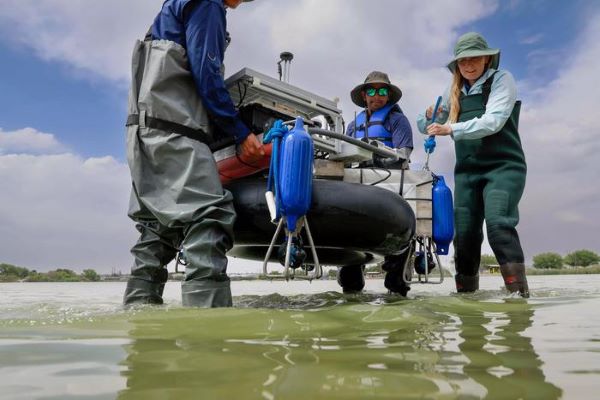Researchers at The University of Texas at El Paso have constructed a fully autonomous boat that can carry out bathymetric surveys — surveys of the depth and terrain of bodies of water like oceans, rivers and lakes. The team hopes the robotic boat can help simplify the survey process, which usually takes a crew of individuals to complete, as well as assist with reconnaissance missions.
The boat and its capabilities are described in the May issue of the journal Sensors.
“There are lots of reasons scientists carry out bathymetric surveys,” said Laura Alvarez, Ph.D., lead author of the study. “If you want to work in water-related studies, you need to know the shape and landscape of bodies of water. For example, you might want to map a reservoir to learn about water supply for electrical demand, or a river to learn about river evolution or flow patterns.”
Alvarez, an assistant professor in UTEP’s Department of Earth, Environmental and Resource Sciences, specializes in unmanned systems for earth science. She started developing the boat several years ago but needed help tweaking and perfecting the system.
His goals included extending the boat’s hours of operation and reliability; and making it fully autonomous and responsive to potential environmental issues like wind speed and temperature flux. Now, a failsafe can detect when batteries are low or wind gusts are too high and triggers a return-to-base function.
The rudderless watercraft operates with four thrusters, allowing it to travel up to 5 feet per second and easily rotate 360-degrees. A solar panel and lithium battery allow the boat to last up to four hours at sea — covering an area up to 472,400 square feet.
All the while a multibeam echosounder — a sonar system — emits sound waves from the bottom of the boat. Water depth can be calculated by the time it takes for the sound wave to water to hit the seafloor and return to the sonar system. The sound itself that returns to the device can help detect the type of material on the seafloor.
Eurekalert







